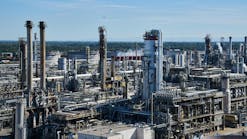EIA: US refinery receipts by rail, truck, barge up 57% in 2012
Increased US crude oil production has spurred the use of rail, truck, and barge to deliver oil to refineries, the US Energy Information Administration reported in its recently released Refinery Capacity Report.
More than 1 million b/d of oil was received by refineries across the nation by rail, truck, and barge in 2012, up 57% from 2011, according to EIA.
These increased receipts vary by region, EIA said, with the Gulf Coast (PADD 3) region accounting for most of the growth.
“PADD 3, where rail, truck, and barge receipts nearly doubled in 2012, is increasingly dependent on rail and truck to move crude production out of the Eagle Ford and Permian basins to refineries in the area until pipelines are built,” EIA said.
Following a decrease in 2011 in part due to refinery closures, East Coast (PADD 1) receipts by rail, truck, and barge increased by 18% in 2012 as a number of refiners put in rail facilities to receive discounted crude from the Bakken and other tight oil formations.
In the Rocky Mountain region (PADD 4), US truck and pipeline imports of Canadian oil continue to increase as US pipeline receipts have stayed flat.
Despite the tremendous growth, “refinery receipts of crude by truck, rail, and barge remain a small percentage of total receipts,” EIA said. Total refinery receipts of crude oil are about 15.2 million b/d, with more than half of that crude oil arriving by pipeline.
“Even as additional pipeline infrastructure is put in place, crude oil is expected to continue moving by rail and truck as economics dictate,” EIA concluded.
Contact Conglin Xu at [email protected].

Conglin Xu | Managing Editor-Economics
Conglin Xu, Managing Editor-Economics, covers worldwide oil and gas market developments and macroeconomic factors, conducts analytical economic and financial research, generates estimates and forecasts, and compiles production and reserves statistics for Oil & Gas Journal. She joined OGJ in 2012 as Senior Economics Editor.
Xu holds a PhD in International Economics from the University of California at Santa Cruz. She was a Short-term Consultant at the World Bank and Summer Intern at the International Monetary Fund.

